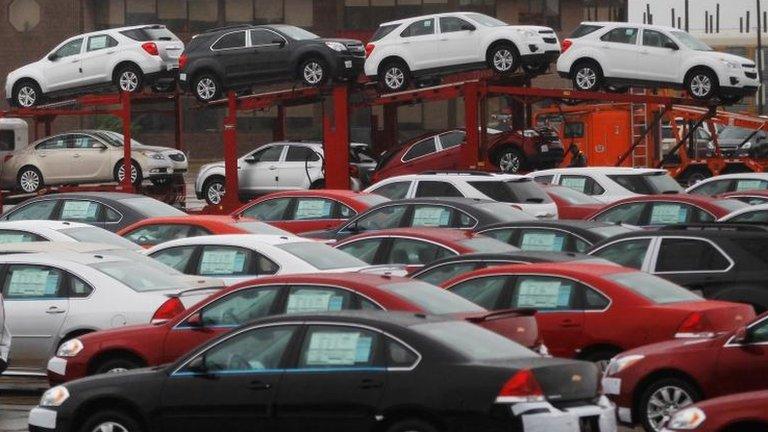US jobs growth jumps in December
- Published

US companies went on a hiring spree in December
The US economy created many more jobs than expected in December, according to the latest government data.
Employers added 312,000 jobs, far ahead of predictions of 177,000, the Labor Department said.
The unemployment rate nudged higher to 3.9%, but is still near historic lows. Average hourly pay increased at an annual rate of 3.2% - an improvement on last month's 3.1%.
The gains sent US stocks soaring, reversing losses from Thursday.
The Dow Jones Industrial Average ended Friday almost 3.3% higher. The S&P 500 rose 3.4%, while the Nasdaq jumped more than 4.2%.
'Forward momentum'
Analysts said the employment surge shows the US economy remains healthy - despite fears of a slowdown that have battered the stock market in recent months.
Paul Ashworth, chief US economist at Capital Economics, said the job increases "make a mockery of recession fears ".
"This employment report suggests the US economy still has considerable forward momentum," he said.

The health care industry saw some of the strongest job gains in December
Overall, payrolls rose by 2.6 million last year, compared to 2.2 million in 2017, as tax cuts and increased government spending helped to boost the economy.
The robust labour market has encouraged more people to look for work - one reason for the uptick in the unemployment rate in December.
After years of relatively stagnant wages, it has also started to force employers to pay more.
Average hourly pay for private sector workers increased more than 3.1% year-on-year for the last three months of 2018 - the strongest streak since 2009.
US President Donald Trump celebrated the news on Twitter.
Allow X content?
This article contains content provided by X. We ask for your permission before anything is loaded, as they may be using cookies and other technologies. You may want to read X’s cookie policy, external and privacy policy, external before accepting. To view this content choose ‘accept and continue’.
Positive revisions
December's rate of hiring far exceeded the roughly 200,000 jobs the US economy has added on average each month over 2018.
The gains largely occurred in fields such as health care, hospitality and leisure, construction, manufacturing, and retail.
New factory jobs in December meant manufacturing ended 2018 with the most jobs added in one year since 1997.
The Labor Department also revised job numbers for October and November, with both month's showing more jobs created than previously thought.
Analysts said the figures may relieve pressure on the Federal Reserve, which has come under fire from critics, including Mr Trump, over plans to raise rates.
Critics say the higher borrowing costs risk denting economic growth, pointing to warning signs such as the stock market turmoil and a slowdown in manufacturing.
But the Fed has maintained that the economy has absorbed the increases so far without difficulty.
Ian Shepherdson, chief economist at Pantheon Macroeconomics, said such a strong employment report makes it "impossible" for the Fed to back away from rate hikes, assuming the gains continue.
"Ultimately, they will do what the labour market data tells them to do," he said.
- Published4 January 2019

- Published26 November 2018

- Published6 December 2018
